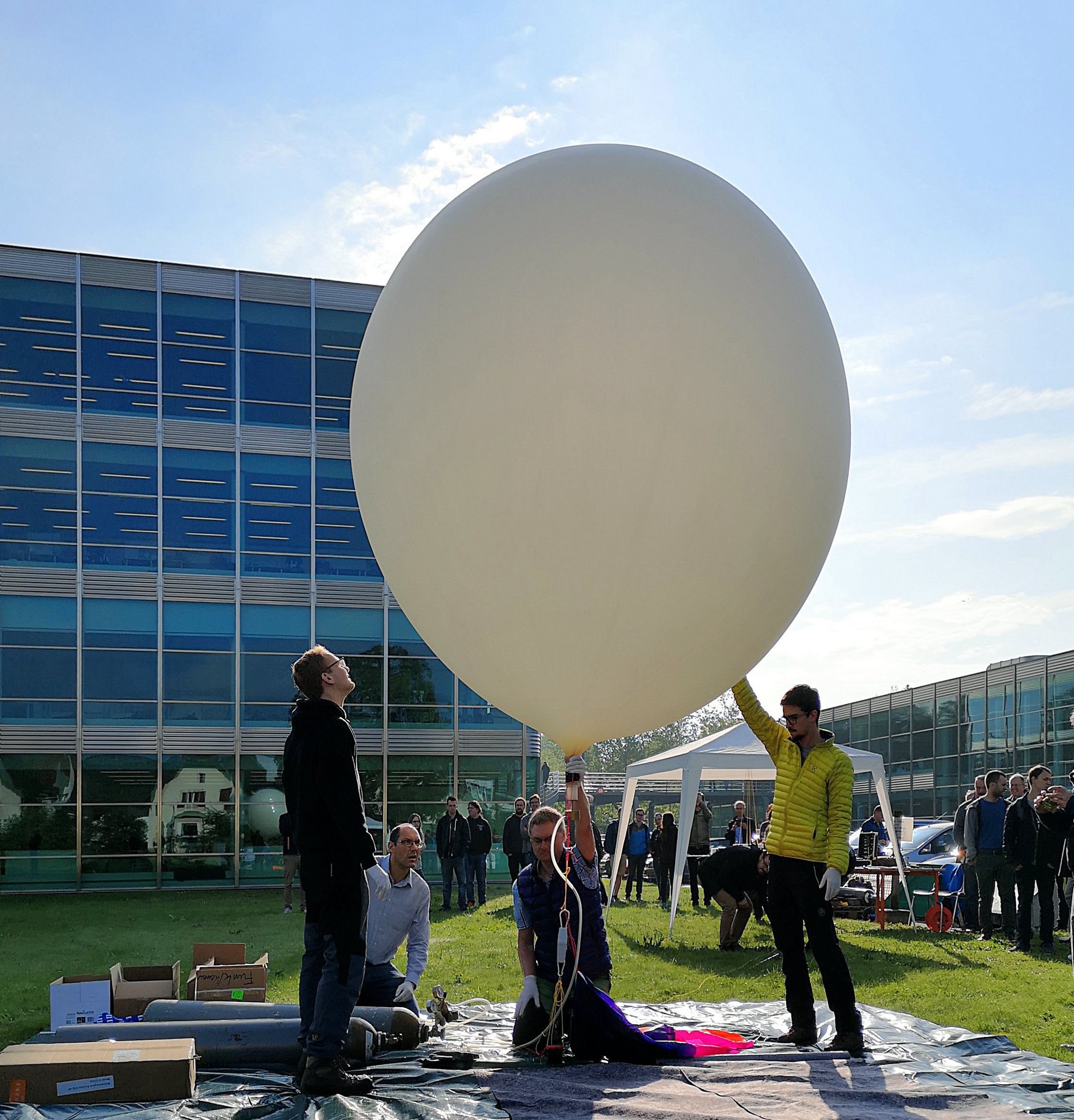QHAPS – Simulation of Satellite-Based Quantum Communication Using Stratospheric Balloons
Future-proof communication systems increasingly rely on quantum communication – for example, through optical links between satellites and ground stations. To test this technology under realistic conditions, FHNW, in collaboration with GA-Synopta, is developing a balloon-based platform that simulates near-Earth orbit conditions. Stratospheric balloons (High-Altitude Platforms, HAPS) offer a unique and cost-efficient alternative to satellite missions.
Background
In earlier projects, FHNW successfully demonstrated optical communication using balloon platforms. Building on this experience, an advanced HAPS platform is now being deployed, combining precise gimbal tracking with MEMS mirrors. At altitudes above 30 km – where more than 99% of the atmosphere lies below the platform – the effects of atmospheric turbulence on optical quantum channels can be studied under near-realistic downlink conditions.
Objectives
The goal is to measure the scintillation index at a wavelength of 637 nm under various geographical and meteorological conditions, and to determine the structure parameter Cn² using the Obukhov-Kolmogorov turbulence model. The results will serve as a basis for model-based extrapolation to wavelengths relevant for quantum communication (850 nm, 1550 nm). The impact of location-specific factors will be systematically investigated using mobile optical ground stations at multiple sites in Switzerland.
Expected Outcomes
The project will deliver validated models describing atmospheric effects on optical quantum links. It will also produce high-quality datasets that can be used for the development of adaptive optics and robust quantum key distribution (QKD) protocols. In parallel, a closed control loop between the balloon platform and the ground station will be established, enabling real-time tracking in a realistic environment.
QHAPS provides a unique research platform for the terrestrial simulation of satellite communication – flexible, scalable, and significantly more cost-effective than orbital tests. The results will strengthen Switzerland's position in the field of secure quantum communication and directly contribute to the implementation of the Swiss Quantum Initiative (SQI).
Project Information
Client | |
Execution | |
Duration | 1,5 Jahre |
Funding | Swiss Quantum Initiative (SQI) |
Team | Prof. Dr. Christoph Wildfeuer (Project Lead), Alain Lavoyer, Timeo Jauslin |

